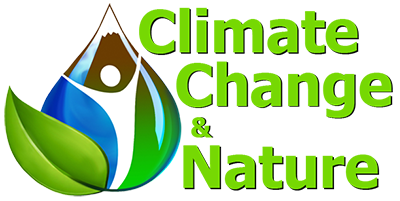Causes: Methane CH4
Dairy cows are our single largest source – image Monika Kubala | Drilliing for gas – image J. Penrose
-
Methane is produced by single-celled ‘methanogenic’ microorganisms that feed on plants in anaerobic (oxygen-free) conditions. They are vital microorganisms because the help decay dead plants and animals. This helps to recycle the nutrients back into the food chain. In the same way that we and other animals breath out carbon dioxide as a waste product, these organisms release methane is a waste product. Methanogenic microorganisms are some of the oldest forms of life on Earth (Archaea) and they’re found everywhere, including in some trees.
Most of the methane they produce is absorbed back into the ground. Much was locked away for many millions of years along with coal (which is why it’s so often found in coal mines) and during the most recent Glacial epoch as frozen clathrates. However, clathrates are now defrosting (see the tab below) the microbes have sprung back into life, and methane is escaping into the atmosphere at a rapidly accelerating rate.
Methane that escapes into the atmosphere takes about 12 years to break down into carbon dioxide (CO2) and enters the carbon cycle.
The New Zealand Greenhouse Gas Inventory report summarised in the graph below uses a range of parameters to assess how much methane is produced by different activities. Some of this is based on estimates, others on actual measurements. Agriculture produces 36.5%. (Image credit: New Zealand Greenhouse Gas Inventory 1990-2018 [April 2020]).
Research published February 2020 revealed a way to distinguish emission from biogenic sources—agriculture, livestock etc—and fossil fuel sources.
Click on the following tabs to find out more about the sources of methane.
-
Ruminant animals, primarily sheep and cows, are the largest producer of anthropogenic methane gas in Aotearoa (see the round graph in the tab above).
Methanogenic microorganisms live in the gut of these animals to breakdown the food using a process called enteric fermentation (Fig. 3).
- A sheep can produce ~30 litres of methane/day
- A dairy cow can produce up to ~200 litres/day.
Here in New Zealand, the number of dairy cows in Canterbury increased from 490 in 1994 to 1,253,993 in 2015.
This has and continues to result in huge quantities of methane escaping into the atmosphere directly from the animals, through effluent ponds, and also by adding fertiliser to land.

While enteric fermentation is natural in grazing animals, around the world, particularly in places like Brazil, humans have burned down millions of hectares of forest and wetlands that once recycled methane efficiently, with millions of domesticated ruminants that graze on grass or are fed grains from grasses.







 Methane clathrate (also called methane hydrate, fire ice, hydromethane, methane ice, natural gas hydrate, or gas hydrate), is methane frozen in a crystal structure of water, forming a solid that looks like ice. Once thought to exist only in the frozen outer parts of the Solar System, it turns out to abundant in permafrost and beneath the ocean floor.
Methane clathrate (also called methane hydrate, fire ice, hydromethane, methane ice, natural gas hydrate, or gas hydrate), is methane frozen in a crystal structure of water, forming a solid that looks like ice. Once thought to exist only in the frozen outer parts of the Solar System, it turns out to abundant in permafrost and beneath the ocean floor.
